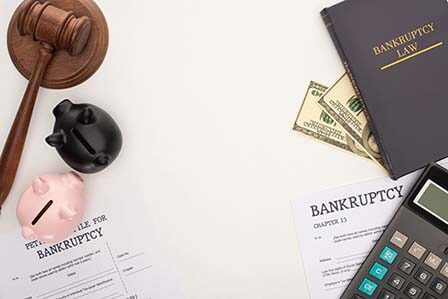 Bankruptcy is available to both businesses and individuals as a process of eliminating debt that is unlikely to ever be repaid. When a person files for bankruptcy it is known as personal bankruptcy and when a commercial organization does so it is known as business bankruptcy, however there are some key differences between each one, the rules that apply, and what chapters are included in each.
Bankruptcy is available to both businesses and individuals as a process of eliminating debt that is unlikely to ever be repaid. When a person files for bankruptcy it is known as personal bankruptcy and when a commercial organization does so it is known as business bankruptcy, however there are some key differences between each one, the rules that apply, and what chapters are included in each.
Let’s take a closer look at 4 differences between personal bankruptcy and business bankruptcy:
Chapter 13 Only Applies to Personal Bankruptcy
Chapter 7 and chapter 13 bankruptcies are two options available under personal bankruptcy, although only chapter 13 applies to personal bankruptcy, with businesses also able to file under chapter 7.
Chapter 13 bankruptcy is for people that continue to have an income so they have the possibility of better managing their debt under the right repayment plan. Under this chapter, the individual is expected to repay some debts and benefit from an improved financial outcome thanks to the bankruptcy process, unlike Chapter 7 where there is no likelihood of any debt repayment.
Chapter 11 Only Applies to Business Bankruptcy
Chapter 11 is a type of bankruptcy that is almost exclusively for business. While an individual can file under this, it is mostly only commercial organizations filing under this chapter, as there are various complexities that make Chapter 7 or 13 more viable.
This type of business bankruptcy shares similarities with Chapter 13 personal bankruptcy, with both processes involving the reorganization of debts.
Under Chapter 11, a business may liquidate or reorganize certain assets that would allow them to pay off existing debts. Both the debtor and creditor propose reorganization plans, with the latter having the final say on which plan is approved.
Different Outcomes to Chapter 7
While Chapter 13 is a type of personal bankruptcy and Chapter 11 is almost exclusively used by businesses, both can file for Chapter 7 bankruptcy, albeit with a different outcome.
For example, under personal bankruptcy, individuals filing successfully for Chapter 7 will have qualified debts discharged, while the business will be dissolved at the outcome of chapter. Because the business no longer exists after filing under Chapter 7, most opt to file for Chapter 11 bankruptcy.
The Means Test
A notable difference between personal and business bankruptcy is the means test. Any individual filing for Chapter 7 or Chapter 13 personal bankruptcy must apply for a means test to qualify, whereas businesses do not need to conduct a means test to prove they are eligible.
The Travis Law Firm provides professional legal representation for Chapter 7 & Chapter 13 bankruptcy services for residents of all cities in Riverside and San Bernardino Counties. We have offices in Riverside, San Bernardino, Victorville, Temecula, Cathedral City and Ontario for the convenience of our Inland Empire, High Desert, and Coachella Valley clients. For more information about our bankruptcy law services and other legal representation, call us today at (951) 274-9501 or (951) 274-9501.
